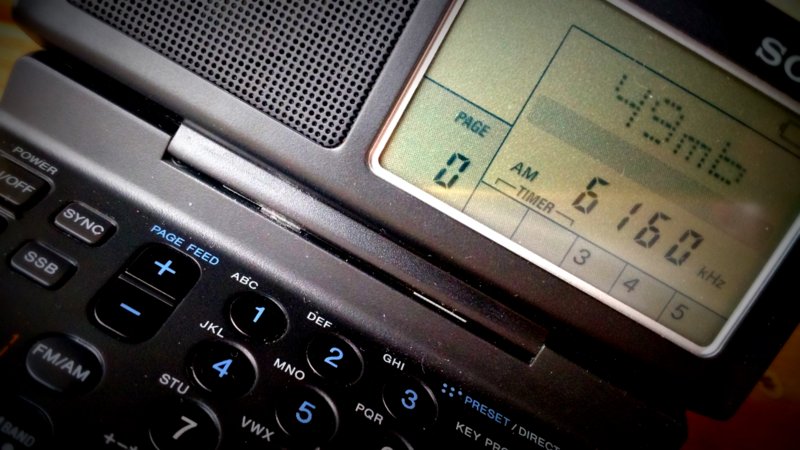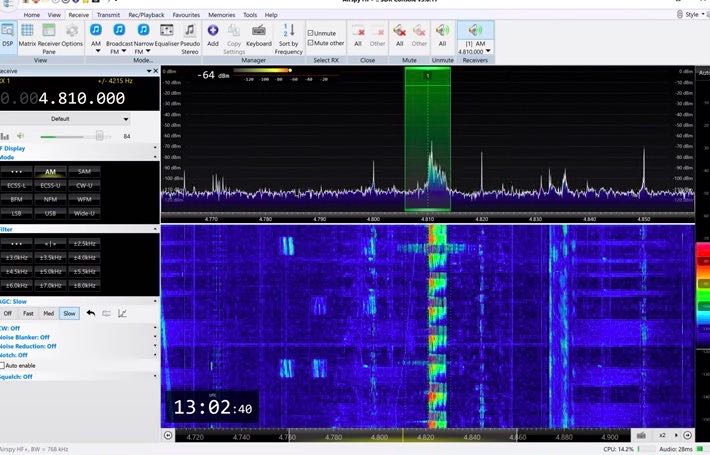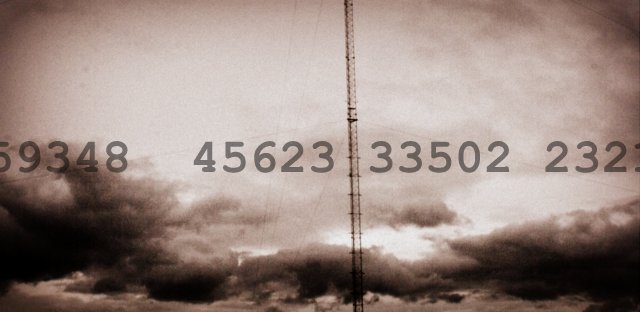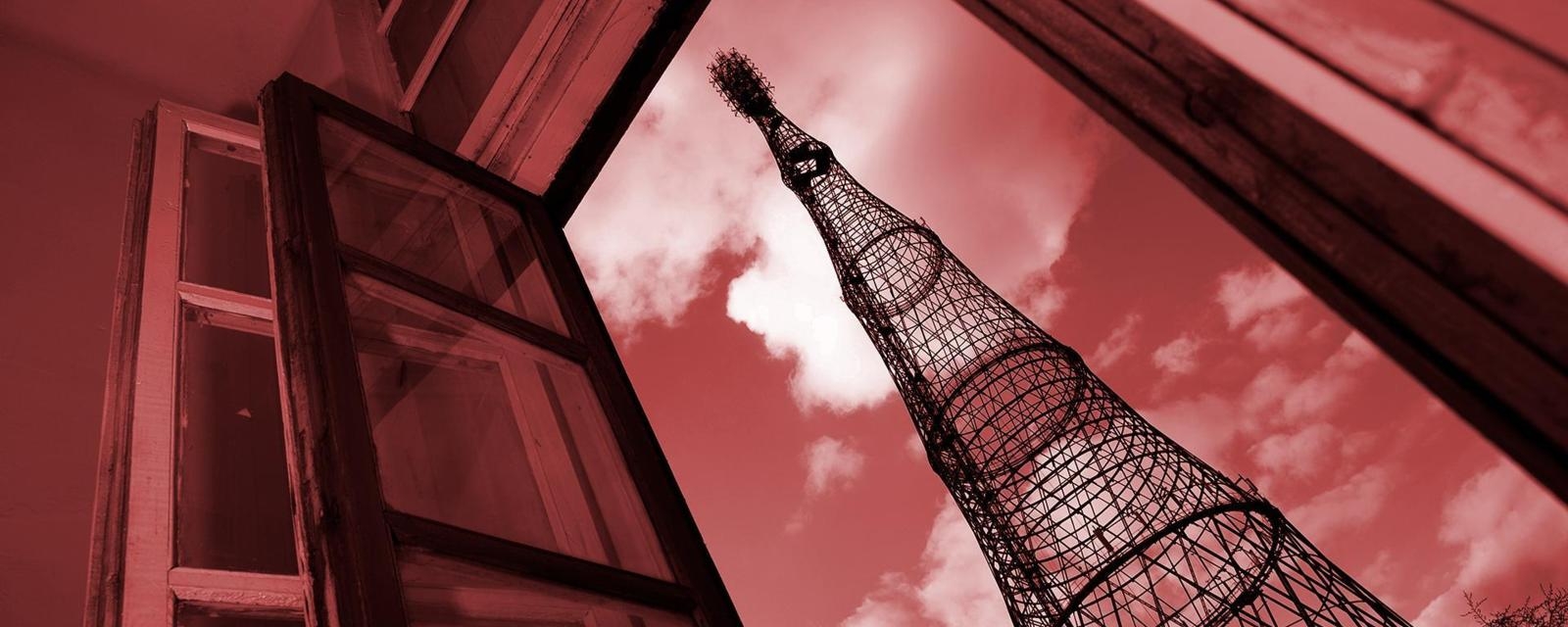 Many thanks to SWLing Post contributor, Fred Waterer, for sharing this article highlighting unusual activity from Russia’s shortwave station UVB-76, sometimes known among shortwave listeners as “The Buzzer.” Known for its continuous buzzing and occasional coded voice messages, the station recently broke pattern by playing music–including Tchaikovsky’s Swan Lake–and transmitting atypical sounds alongside cryptic codes, sparking speculation about the source and meaning of the broadcast.
Many thanks to SWLing Post contributor, Fred Waterer, for sharing this article highlighting unusual activity from Russia’s shortwave station UVB-76, sometimes known among shortwave listeners as “The Buzzer.” Known for its continuous buzzing and occasional coded voice messages, the station recently broke pattern by playing music–including Tchaikovsky’s Swan Lake–and transmitting atypical sounds alongside cryptic codes, sparking speculation about the source and meaning of the broadcast.
Tag Archives: The Buzzer
Radio Waves: 20K Hz & The Buzzer, Cuba Jamming, Rugby Radio Station soon a school, HRO Opens a store in FL, Police Use Morse, Tool Box Spy Radio, and “Einstein Listened”
Radio Waves: Stories Making Waves in the World of Radio
Because I keep my ear to the waves, as well as receive many tips from others who do the same, I find myself privy to radio-related stories that might interest SWLing Post readers. To that end: Welcome to the SWLing Post’s Radio Waves, a collection of links to interesting stories making waves in the world of radio. Enjoy!
Many thanks to SWLing Post contributors Paul, David Goren, Pete Polanyk, Ulis Fleming, Troy Riedel, Tracy Wood, Dan Robinson, and Kris Partridge for the following tips:
The Buzzer (Twenty Thousand Hertz podcast)
This episode was written and produced by Olivia Rosenman.
Since World War I, countries around the world have been broadcasting mysterious numerical messages via shortwave radio. Though concrete evidence is hard to come by, the general consensus is that these coded messages are meant for undercover agents operating abroad. And one particular Russian station may have an even more sinister purpose. Featuring computer engineer Andrus Aaslaid, historian Maris Goldmanis, and documentary photographer Lewis Bush.
Cuba Jamming Ham Radio? Listen For Yourself (IEEE Spectrum)
A public SDR network triangulates the island as the source of mystery signals
By Stephen Cass
As anti-government protests spilled onto the streets in Cuba on July 11, something strange was happening on the airwaves. Amateur radio operators in the United States found that suddenly parts of the popular 40-meter band were being swamped with grating signals. Florida operators reported the signals were loudest there, enough to make communication with hams in Cuba impossible. Other operators in South America, Africa, and Europe also reported hearing the signal, and triangulation software that anyone with a web browser can try placed the source of the signals as emanating from Cuba.
Cuba has a long history of interfering with broadcast signals, with several commercial radio stations in Florida allowed to operate at higher than normal power levels to combat jamming. But these new mystery signals appeared to be intentionally targeting amateur radio transmissions. A few hours after the protest broke out on the 11th, ham Alex Valladares (W7HU) says he was speaking with a Cuban operator on 7.130 megahertz in the 40-meter band, when their conversation was suddenly overwhelmed with interference. “We moved to 7170, and they jam the frequency there,” he says. Valladares gave up for the night, but the following morning, he says, “I realize that they didn’t turn off those jammers. [Then] we went to [7]140 the next day and they put jamming in there.”[…]
New school at home of former radio station on track for autumn launch (Coventry Telegraph)
Houlton School, where Rugby Radio Station once stood, is set take its first influx of pupils in September
Plans for a new school at the historic former home of Rugby Radio Station are being fine-tuned and remain on track for a September start.
Houlton School, which will be named after the town in America that received the first transatlantic voice broadcast from Rugby Radio Station in 1927, will take its first influx of 180 Year 7 pupils this autumn.
The school, which forms part of the 6,200-home urban extension in Houlton, east of Rugby town centre, will take a new year group of 180 pupils every 12 months.
Michael McCulley, the school’s Principal Designate, said: “Whilst building a fantastic £39m new school during three lockdowns has had its challenges, we are also acutely aware that we have had a completely blank page from which to develop our exciting curriculum and pastoral programme.
“This freedom has been important as we have needed to evolve to the changing needs of our first group of students.[…]
Ham Radio Outlet to open store in Florida (Amateur Radio Newsline)
Ham Radio Outlet, the nationwide amateur radio retailer in the US, has announced that its ongoing expansion plans will include a store in the state of Florida. The new store will join 12 already open in such states as California in the West, where the company is based, to Delaware in the East, Arizona and Texas in the South, New Hampshire in the North. The company’s announcement on social media set off a wave of speculation about the new location, especially on Instagram where the company wrote, “We’re not telling yet! We’re open to suggestions.” The closest Ham Radio Outlet to Florida is in Atlanta, Georgia. The company, which calls itself the world’s largest supplier of amateur radio equipment, is also known for shipping internationally.
Old is gold: In times of satellite & internet, Pune cops keep Morse Code in use as a robust stand-by communication mode (The Indian Express)
Every Sunday, an operator with Pune Police’s wireless wing sends a Morse Code message to the office of the Director General of Police, Maharashtra.
IN THE era of satellite communication, which involves transmitting signals into space and back, and internet based systems transferring gigabytes of data in a flash, police have kept alive the age-old system of Morse Code – a primitive method of sending messages in the form of dots and dashes.
Every Sunday, an operator with Pune Police’s wireless wing sends a Morse Code message to the office of the Director General of Police, Maharashtra. While this is their way of paying tributes to one of the earliest modes of telecommunication, it is primarily a way of maintaining a robust stand-by mode of message delivery in case all other means of communication fail.
Pune City police have recently started a series of tweets featuring the communication systems used by the police and their evolution till date. On Sunday, Pune Police Commissioner Amitabh Gupta tweeted, “As an ode to the beginning of wireless communications, the Commissioner’s Office still uses Morse Code to transmit Messages every Sunday.”[…]
Antiques Roadshow: Spy radio disguised as toolbox found in garden shed worth huge sum (The Express)
ANTIQUES ROADSHOW saw a World War II spy radio which was disguised as a toolbox fetch a huge valuation when it travelled to Kenilworth Castle.
Antiques Roadshow’s expert Mark Smith marvelled at the ingenuity of a spy radio which was used in World War Two in a recent episode. The item, from the outside, was made to look like a toolbox but when opened, displayed a detailed radio which could be “powered by any source”. So how much was it worth? Mark put a £10,000 to £15,000 price tag on it.[…]
Einstein Listened (WNYC)
Former WNYC director Seymour N. Siegel suggested that WNYC once received fan mail from Einstein. As I continue to look far and wide for evidence of this alleged bit of praise, I can’t help but wonder, what broadcast prompted the great man to write? Alas, so far, the document has eluded me. But, we do know that the father of the theory of relativity was a subscriber to both the WNYC and WQXR program guides. And we have no less than Erwin Panofsky, the noted German-American art historian and friend of Einstein’s, to thank for that.
It all began when the distinguished gang at the Institute for Advanced Study in Princeton, New Jersey decided to chip in and build the Nobel laureate a “high-fidelity” radio for his 70th birthday. The 1949 gift included subscriptions to the WNYC, WQXR, and WABF program guides.[…]
Do you enjoy the SWLing Post?
Please consider supporting us via Patreon or our Coffee Fund!
Your support makes articles like this one possible. Thank you!
Richard shares recordings of The Buzzer
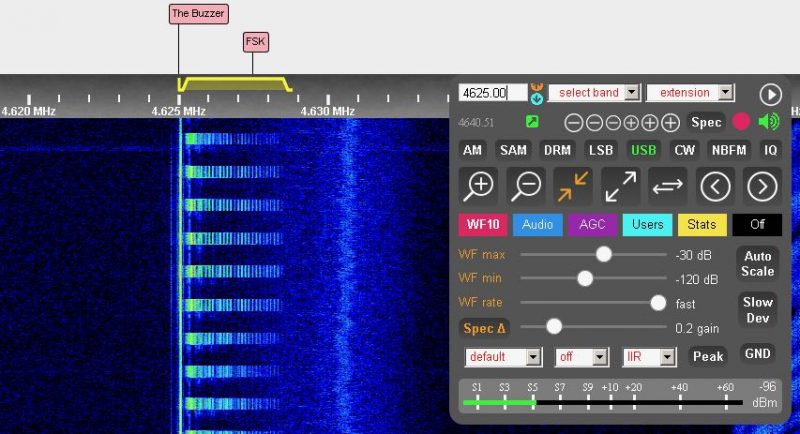 Many thanks to SWLing Post contributor, Richard Lacroix,
Many thanks to SWLing Post contributor, Richard Lacroix,
I was intrigued by your post, “The ghostly radio station that no one claims to run (BBC Future)”. I attempted to listening to the station on 4625 kHz from my home location here in Toronto, Ontario Canada but unfortunately could not receive the signal. WebSDR to the rescue. I managed to locate a couple of KiwiSDRs in Russia which yielded great reception of “The Buzzer”.
I figured that some readers may be interested in knowing what the buzzer sounds like. I have therefore included 2 recordings of the broadcast; the first in AM and the second in USB mode with a 3.2 kHz wide filter setting. I am also sharing a screen shot of the waterfall which clearly depicts the signal [see at top of post].
Recordings
The Buzzer recorded July 18, 2020 at 01:07 UTC on 4625 kHz in AM mode:
The Buzzer recorded July 18, 2020 at 08:26 UTC on 4625 kHz in upper sideband mode:
Thank you for sharing this, Richard!
Like you, I have difficult receiving The Buzzer from North America (especially in summer conditions with QRN). That’s where KiwiSDRs really come to the rescue. Thanks again for sharing your recordings.
Radio Waves: Narco-Antennas, Pirate Radio Beginnings, Arqiva Restructure and Redundancies, and the Ghostly Buzzer
Radio Waves: Stories Making Waves in the World of Radio
Because I keep my ear to the waves, as well as receive many tips from others who do the same, I find myself privy to radio-related stories that might interest SWLing Post readers. To that end: Welcome to the SWLing Post’s Radio Waves, a collection of links to interesting stories making waves in the world of radio. Enjoy!
Many thanks to SWLing Post contributors Skip Arey, David Goren, Paul Evans, Kanwar Sandhu and Dave Porter for the following tips:
Special Report: Drug cartel ‘narco-antennas’ make life dangerous for Mexico’s cell tower repairmen (Reuters)
MEXICO CITY (Reuters) – The young technician shut off the electricity at a cellular tower in rural Mexico to begin some routine maintenance.
Within 10 minutes, he had company: three armed men dressed in fatigues emblazoned with the logo of a major drug cartel.
The traffickers had a particular interest in that tower, owned by Boston-based American Tower Corp (AMT.N), which rents space to carriers on its thousands of cellular sites in Mexico. The cartel had installed its own antennas on the structure to support their two-way radios, but the contractor had unwittingly blacked out the shadowy network.
The visitors let him off with a warning.
“I was so nervous… Seeing them armed in front of you, you don’t know how to react,” the worker told Reuters, recalling the 2018 encounter. “Little by little, you learn how to coexist with them, how to address them, how to make them see that you don’t represent a threat.”
The contractor had disrupted a small link in a vast criminal network that spans much of Mexico. In addition to high-end encrypted cell phones and popular messaging apps, traffickers still rely heavily on two-way radios like the ones police and firefighters use to coordinate their teams on the ground, six law enforcement experts on both sides of the border told Reuters.[…]
How Pirate Radio Rocked the 1960s Airwaves and Still Exists Today (HowStuffWorks)
If you’ve been binge-watching movies lately, you may have come across “Pirate Radio.” Director Richard Curtis’ 2009 comedy-drama stars the late Philip Seymour Hoffman as The Count, a disc jockey for an unlicensed rock radio station that broadcast from a rusty, decrepit ship off the British coast in the mid-1960s, defying government authorities to spin the rock records that weren’t allowed on the BBC at the time. The plot is based loosely on the saga of an actual former pirate station, Radio Caroline, that was founded by an offbeat Irish entrepreneur named Ronan O’Rahilly, the inspiration for the character portrayed by Bill Nighy.
“Pirate Radio” is a period piece, set in a time when the Rolling Stones’ “Let’s Spend the Night Together” and the Who’s “My Generation” were still scandalous and controversial rather than nostalgic anthems for today’s aging baby boomers. So you couldn’t be blamed for assuming that it depicts a long-vanished phenomenon, like Nehru jackets with iridescent scarves and psychedelic-patterned paper mini dresses.
To the contrary, though, more than a half-century later, pirate radio is still a thing. In fact, it’s possibly more widespread than it was in the 1960s, even in an age when streaming internet services such as Spotify and Pandora put the equivalent of a jukebox in the pocket of everyone with a smartphone. And as a bonus, Radio Caroline still exists — though, ironically, it’s gone legal.[…]
Arqiva confirms restructure and redundancies (IBC.org)
[Note: Arqiva is the UK domestic broadcast transmission provider.]
Arqiva is working on a restructure of its business that could result in a third of its staff being made redundant.
According to a report in the Telegraph, the media infrastructure business is preparing to cut around 500 staff, which is approximately a third of its workforce.
An Arqiva spokesperson confirmed to IBC365 that some job losses will occur.
They said: “The sale of our telecoms business makes Arqiva a smaller organisation, changes our revenue profile and reduces our available profit pool.
”We are therefore conducting a review of the costs and systems we need to run our business over the next three years.
”Regrettably, we will need to reduce the size of our workforce, but it’s much too early to speculate about numbers.”
The Telegraph report cites the shift to streaming and a drop in income for broadcasters as reasons for the potential cuts.[…]
The ghostly radio station that no one claims to run (BBC Future)
In the middle of a Russian swampland, not far from the city of St Petersburg, is a rectangular iron gate. Beyond its rusted bars is a collection of radio towers, abandoned buildings and power lines bordered by a dry-stone wall. This sinister location is the focus of a mystery which stretches back to the height of the Cold War.
It is thought to be the headquarters of a radio station, “MDZhB”, that no-one has ever claimed to run. Twenty-four hours a day, seven days a week, for the last three-and-a-half decades, it’s been broadcasting a dull, monotonous tone. Every few seconds it’s joined by a second sound, like some ghostly ship sounding its foghorn. Then the drone continues.
Once or twice a week, a man or woman will read out some words in Russian, such as “dinghy” or “farming specialist”. And that’s it. Anyone, anywhere in the world can listen in, simply by tuning a radio to the frequency 4625 kHz.
It’s so enigmatic, it’s as if it was designed with conspiracy theorists in mind. Today the station has an online following numbering in the tens of thousands, who know it affectionately as “the Buzzer”. It joins two similar mystery stations, “the Pip” and the “Squeaky Wheel”. As their fans readily admit themselves, they have absolutely no idea what they are listening to.[…]
Do you enjoy the SWLing Post?
Please consider supporting us via Patreon or our Coffee Fund!
Your support makes articles like this one possible. Thank you!
Numbers Station UVB-76: A New Buzzer Twin on 4810 kHz
Many thanks to SWLing Post contributor, Tom (DF5JL), who writes:
Who doesn’t know the mysterious station “The Buzzer” on 4625 kHz – but now it gets even more exciting: Because since today “The Buzzer” has a twin that transmits on 4810 kHz – fully synchronous. And to make to put a scoop on it: location is apparently near Changdu in China.
Thanks for the tip, Tom!
Yes, I noticed that our friend, Tudor Vedeanu, recently posted a recording of the new Buzzer twin on 4810 kHz:
I’m curious if the new Buzzer frequency is being used 100% of the time? Can anyone confirm?
Do you enjoy the SWLing Post?
Please consider supporting us via Patreon or our Coffee Fund!
Your support makes articles like this one possible. Thank you!
MDZhB featured in BBC Future’s “Best of 2017”
Many thanks to SWLing Post contributor, Golan Klinger, who shares the following article which was elected “Best Of 2017″ on the BBC Future website:
“MDZhB” has been broadcasting since 1982. No one knows why.
In the middle of a Russian swampland, not far from the city of St Petersburg, is a rectangular iron gate. Beyond its rusted bars is a collection of radio towers, abandoned buildings and power lines bordered by a dry-stone wall. This sinister location is the focus of a mystery which stretches back to the height of the Cold War.
It is thought to be the headquarters of a radio station, “MDZhB”, that no-one has ever claimed to run. Twenty-four hours a day, seven days a week, for the last three-and-a-half decades, it’s been broadcasting a dull, monotonous tone. Every few seconds it’s joined by a second sound, like some ghostly ship sounding its foghorn. Then the drone continues.
Once or twice a week, a man or woman will read out some words in Russian, such as “dinghy” or “farming specialist”. And that’s it. Anyone, anywhere in the world can listen in, simply by tuning a radio to the frequency 4625 kHz.
It’s so enigmatic, it’s as if it was designed with conspiracy theorists in mind. Today the station has an online following numbering in the tens of thousands, who know it affectionately as “the Buzzer”. It joins two similar mystery stations, “the Pip” and the “Squeaky Wheel”. As their fans readily admit themselves, they have absolutely no idea what they are listening to.[…]
Click here to continue reading the full article on the BBC Future website.
The Ghostly Radio Station that No One Claims to Run
There is a great article by Zaria Gorvett in the BBC Future online magazine concerning several transmitting stations which have baffled folks for decades.
Here is a brief introduction:
In the middle of a Russian swampland, not far from the city of St Petersburg, is a rectangular iron gate. Beyond its rusted bars is a collection of radio towers, abandoned buildings and power lines bordered by a dry-stone wall. This sinister location is the focus of a mystery which stretches back to the height of the Cold War.
It is thought to be the headquarters of a radio station, “MDZhB”, that no-one has ever claimed to run. Twenty-four hours a day, seven days a week, for the last three-and-a-half decades, it’s been broadcasting a dull, monotonous tone. Every few seconds it’s joined by a second sound, like some ghostly ship sounding its foghorn. Then the drone continues.
Once or twice a week, a man or woman will read out some words in Russian, such as “dinghy” or “farming specialist”. And that’s it. Anyone, anywhere in the world can listen in, simply by tuning a radio to the frequency 4625 kHz.
It’s so enigmatic, it’s as if it was designed with conspiracy theorists in mind. Today the station has an online following numbering in the tens of thousands, who know it affectionately as “the Buzzer”. It joins two similar mystery stations, “the Pip” and the “Squeaky Wheel”. As their fans readily admit themselves, they have absolutely no idea what they are listening to.
The whole article is a highly enjoyable read – check it out! 73, Robert AK3Q
Robert Gulley, AK3Q, is the author of this post and a regular contributor to the SWLing Post. Robert also blogs at All Things Radio.



